Proctology
Currently most colonic and anorectal disorders occur because of unhealthy diet, sedentary lifestyle and stress. As a result venous stasis develops in the lower parts of the intestine, mucous membrane integrity is disturbed causing infections and sometimes tumors. These impairments worsen the patient's condition. Many patients are embarrassed to address these delicate problems because of psychological and physical discomfort, but without treatment the disease begins to progress bringing complications and delaying the recovery.
Proctology is the branch of medicine that deals with the diagnosis and treatment of disorders affecting the colon, rectum and anus. However, the term coloproctology is used more often today as it has a broader meaning including research of the problems associated with the colon and adjacent organs.
Coloproctologist is a doctor who deals with the prevention, diagnosis and treatment of colonic and anorectal disorders.
Dobrobut medical network Proctology center stands for :
Certified Dobrobut proctologists treat:
- hemorrhoids;
- anal fissures;
- paraproctitis and rectum fistulas;
- rectovaginal fistulas;
- colon and rectal cancer;
- pelvic prolapse, rectocele;
- ulcerative colitis and Crohn's disease;
- polyps of the colon and rectum;
- chronic constipation;
- coccygeal cysts, epithelial coccygeal passage;
- diverticulosis;
- warts;
- residual marks of hemorrhoids
A doctor's consultation is necessary if you feel:



Diagnostics in proctology
Modern proctology has a wide range of diagnosis examinations to confirm or rule out the proctological diagnosis.
- During the appointment a proctologist performs a finger examination of the rectum, anoscopy and rectoromanoscopy. In the vast majority of cases simple and painless diagnostic procedures allow making diagnosis during the first examination.
- Colonoscopy is also very important for examination of the patient. It allows examining all sections of the colon and the final sections of the small intestine. Colonoscopy at the Dobrobut Medical Center is performed using the state-of-the-art Karl Storz (Germany) and Olympus (Japan) equipment, which provides maximum accuracy and ultra-high detail with minimal discomfort to the patient. The examination is performed under local or general anesthesia in a comfortable patient’s position on the left side. The procedure lasts no more than 10-15 minutes. Colonoscopy allows using a microscope to visually assess the structure of intestinal tissues and the available inflammatory process, to detect tumors, polyps, diverticula, their location, size and nature.
- For even more accurate diagnosis Toshiba 1.5 Tesla high-field magnetic resonance imaging system is used. MRI allows reproducing all anatomical relationships that help the surgeon move in the right direction during the operation as if ‘in the map’.
- In addition to instrumental examination methods, laboratory tests are conducted: general blood count, complete coprogram, test for latent blood in the feces.
Read more about diagnostics at Dobrobut
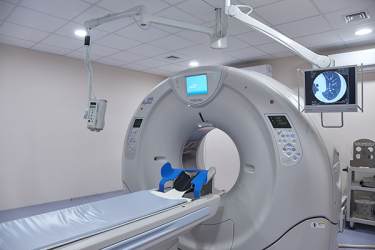
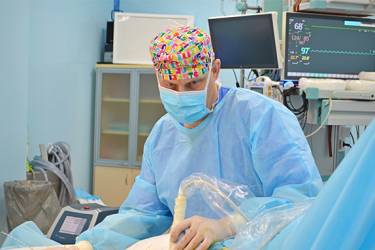
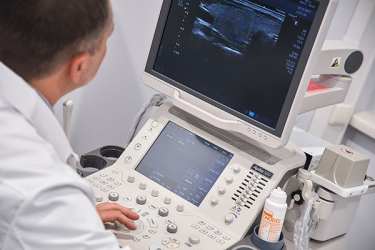
Treatment in proctology
- hemorrhoids;
- anal fissures;
- paraproctitis and rectum fistulas;
- rectovaginal fistulas;
- colon and rectal cancer;
- pelvic prolapse, rectocele;
- ulcerative colitis and Crohn's disease;
- polyps of the colon and rectum;
- chronic constipation;
- coccygeal cysts, epithelial coccygeal passage;
- diverticulosis;
- warts;
- residual marks of hemorrhoids
Hemorrhoids
Hemorrhoids is one of the common diseases associated with sedentary lifestyle and is the leader among all proctological disorders. Non-surgical and surgical methods are used to treat hemorrhoids in the Dobrobut Medical Network.
Non-surgical treatment is used for stage 1-2 hemorrhoids. Dobrobut offers modern methods of treatment: infrared photocoagulation and latex ligation.
- Latex ligation is the gold standard for treating stage 2 hemorrhoids worldwide. The vacuum device sucks the hemorrhoid and its base is squeezed with a special latex ring to cut off blood circulation. Deprived of blood supply, the base falls off within 10-14 days.
The non-surgical treatment of hemorrhoids is beneficial as it is painless, fast and performed in outpatient settings.
Surgical treatment of hemorrhoids of all forms and stages
- laser ablation of hemorrhoids;
- THD - transanal hemorrhoidal dearterialization;
- hemorrhoidectomy using Surgitron radio-wave device and harmonic ultrasonic scalpel.
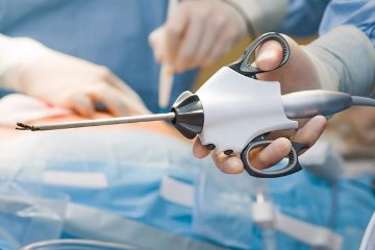
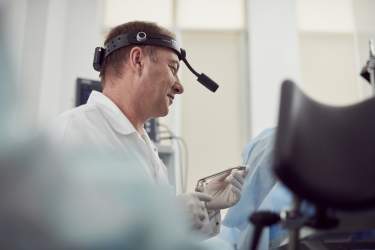
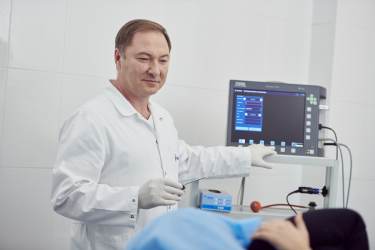
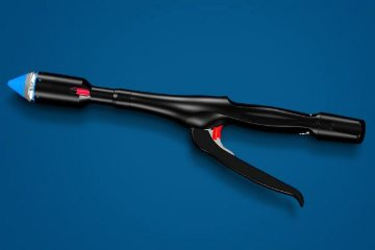
Laser ablation of hemorrhoids
Dobrobut MC is the first in Ukraine to use the unique diode laser Biolitec (Germany) for treatment of stage 2-3 hemorrhoids. This technology allows operating without incisions and wounds, there is no pain and great discomfort and the post-operation recovery period is significantly reduced.
The laser wave-guide is inserted under the mucous membrane of the hemorrhoid through a puncture 2 mm in diameter. The laser beam ‘seals’ the vessels from the inside, the hemorrhoid is reduced, bleeding and prolapse are eliminated. Patients stay in the hospital for 12 to 24 hours and can return to work in a few days.
THD - transanal hemorrhoidal dearterialization
Stapled hemorrhoidopexy is used for treatment of stage 3 and 4 hemorrhoids. Hemorrhoids are removed with a special suturing device, which simultaneously excises the mucous membrane and restores its integrity with small titanium clips leaving no wounds and scars in the anus.
The operation is performed in the rectum at a 4-5 cm depth where there is no pain sensitivity. The postoperative period is completely painless and a patient spends 1 day in the hospital. The patient can walk and eat in 2 hours after the operation. After 4-5 days patients return to work and normal life. The efficiency of the operation exceeds 95%.
Hemorrhoidectomy using Surgitron radio-wave device and harmonic ultrasonic scalpel
Internationally, this method is recognized as the most sparing among surgery interventions in advanced 3 and 4 stage hemorrhoids, complicated hemorrhoids and thrombosed hemorrhoids. The tissues are not cut mechanically as with a conventional scalpel, but evaporated by radio frequency current or ultrasound without causing significant injury. At the same time, hemorrhage is stopped, the wound edges are ‘welded’, which accelerates healing and makes the postoperative period less painful. The effectiveness of this intervention is up to 97-98%. Patients stay in the hospital for no more than 24 hours. Period of the limited work capacity is up to 7 days.
Treatment of anal fissures
Anal fissures are the second most common (after hemorrhoids) reason to consult a protologist. Anal fissures are manifested by severe pain in the anus when passing stools and by release of a small amount of blood. It is important to consult a doctor on time (in the first 1-2 weeks) and to start appropriate medical treatment otherwise anal fissures become chronic. Crack edges become rough and scarred so that self-recovery is no longer possible. In such cases, surgical treatment is required.
The Dobrobut Proctology Center treat anal fissures using Surgitron radio-wave device. Radio frequency current removes the rough edges of the cracks, which allows them to heal. If necessary, lateral sphincterotomy (small, up to 2-3 mm long, incision of the internal sphincter) is performed to eliminate painful spasm and provide rest for the wound.
The postoperative period is almost painless. Anesthetics are recommended for 1-3 days. Procedures can be performed under general or local anesthesia. We recommend hospitalization for 12-24 hours for maximum comfort and patients' health safety. In 2 hours after the procedure a patient can get up, walk and eat and in 3-4 days return to daily routine.
Treatment of paraproctitis, rectum fistulas and rectovaginal fistulas
Paraproctitis is a purulent inflammation of the cellular tissues surrounding the rectum. In most cases this abscess is directly related to the intestinal lumen - a fistula. Removal of paraproctitis and fistulas is a complex surgical task that requires involvement of multiple medical specialists.
The Dobrobut Proctology Center offers treatment of patients with paraproctitis by using modern diagnostic and treatment equipment according to German and US standards.
The Dobrobut Proctology Center medical specialists have extensive experience in treating patients with acute and chronic paraproctitis. We receive patients from different regions and from abroad including extremely complicated cases and recurrences after numerous surgery failures. We have performed over 1000 successful surgeries of rectal fistulas.
Rectal fistula treatment approaches
Dobrobut doctors are skilled in using the advanced methods of rectal fistula treatment recognized in the world. The type of surgery is selected for patients individually.
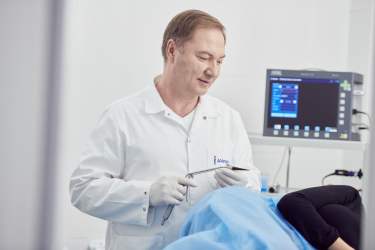

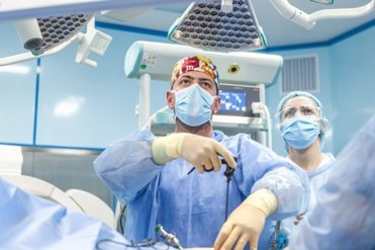
Surgitron Radiowave Surgery
Surgitron radiowave surgery is the removal of a fistula using radiofrequency current. A wound resembling a petal with a tip located in the rectum and a base on the skin is left on the site of the removed fistula. The healing of this wound is gradual and takes over 1-1.5 months. This method provides the best results (at least 92% of successful healing) and minimal pain in the postoperative period due to the use of a radio knife. After the operation a patient stays in the hospital for 1-2 days and then undergoes accelerated rehabilitation under the Fast Track program.
LIFT: Microsurgical Fistula Closure
Microsurgical fistula closure is another advanced technique for the first time performed in Ukraine by the Dobrobut Proctology Center in 2010. The operation is performed without damaging the sphincter, through a small incision (no more than 1-2 cm) near the anus. A special tool is used to identify the fistulous tract at its very beginning near the wall of the rectum, and it is stitched and crossed in this area. Thus, the fistula is separated from the rectum reducing the risk of damage to the sphincter muscle fibers and the fecal incontinence development.
Healing is fast and painless. Patients stay in the hospital for no more than a day. The method is indicated for complex fistulas.
Fistula-Ttact Laser Closure (FILaC)
FILaC or fistula laser closure is a leading method of rectal fistula treatment. The Dobrobut Proctology Center is performed for the first time in Ukraine using the latest generation Biolitec 1470 nm laser. The laser waveguide inserted into the fistula canal ‘welds’ its walls from the inside without damaging the surrounding tissues. The method is minimally invasive, there is no need for analgesics after the operation and it can even be performed as an outpatient procedure. Now this method is recommended for not very complicated fistulas.
VAAFT - (Video assisted anal fistula treatment) without incision
Video assisted anal fistula treatment without incision is performed in Ukraine only in the Dobrobut Proctology Center. Procedure is performed by using unique Karl Storz equipment (Germany) - an endoscope less than 4 mm in diameter. The device is inserted directly into the fistulous tract under video assistance and the fistula walls are removed from the inside without damaging the skin, mucous membranes and sphincter. In 1-2 hours after the procedure patients can return to their usual way of life and leave the hospital on the next day. This method helps to treat the most complex fistulas with a complex tortuous tract and residual cavities.
Strengths of the Dobrobut Proctology Center
Our services
Our service packages
Our doctors
We are located at
ISO certificates
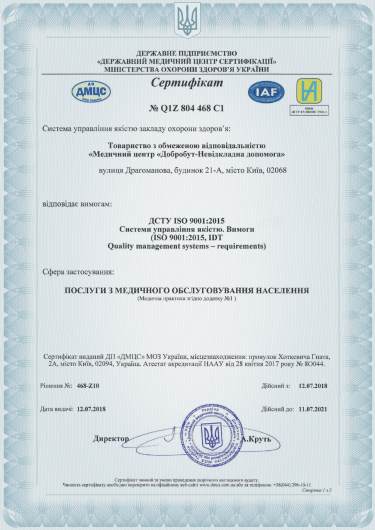
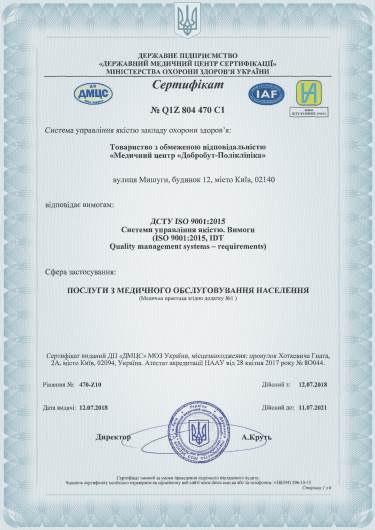
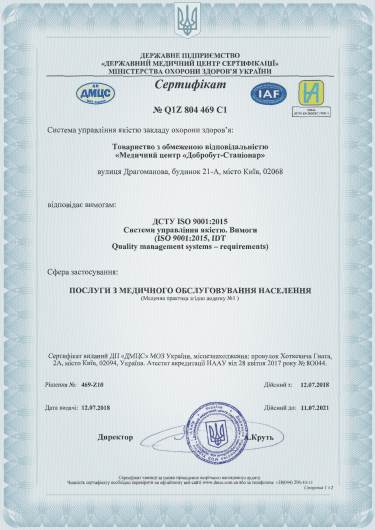
Accreditation certificates
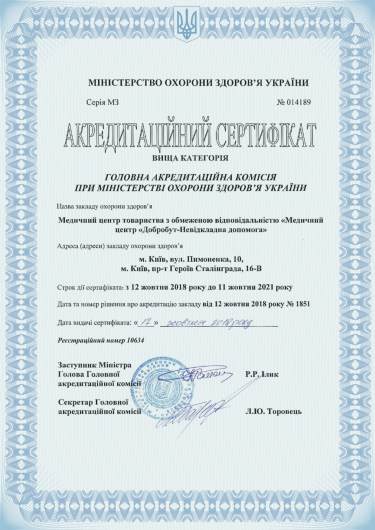
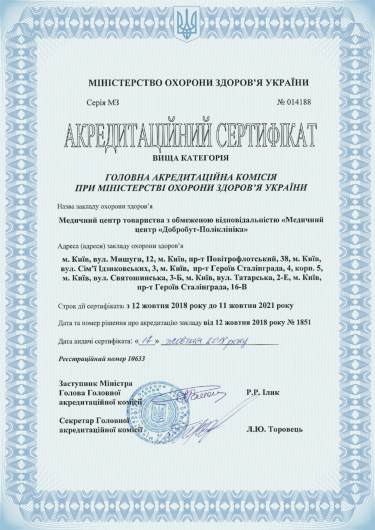

Medical practice licenses
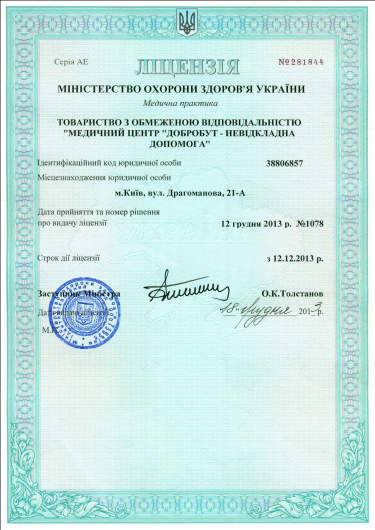
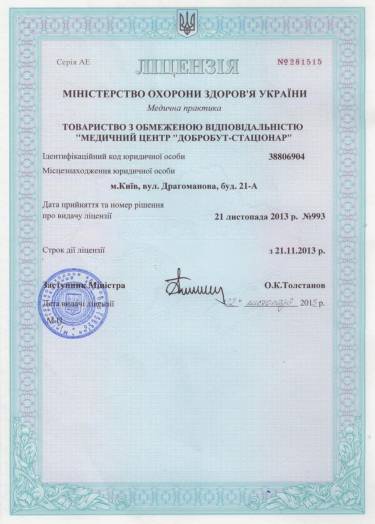

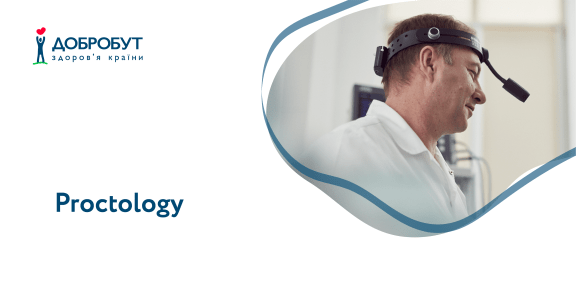
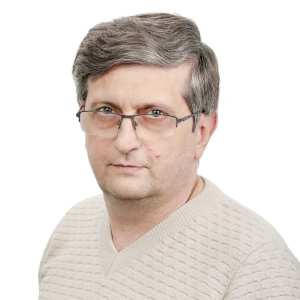
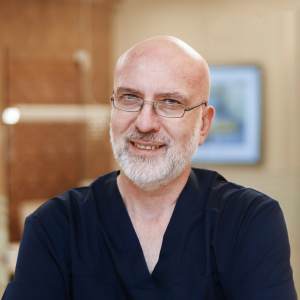












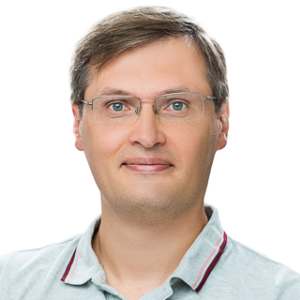



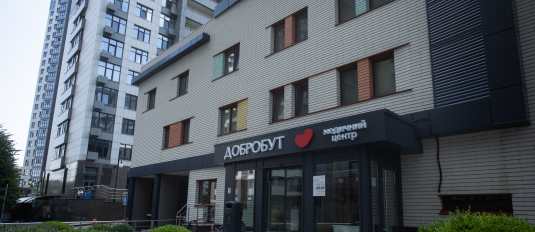
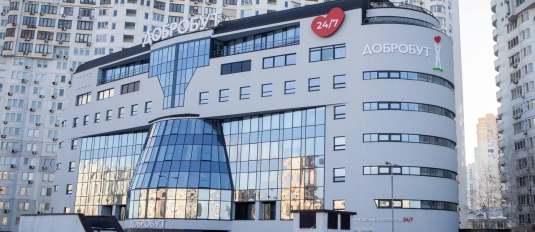
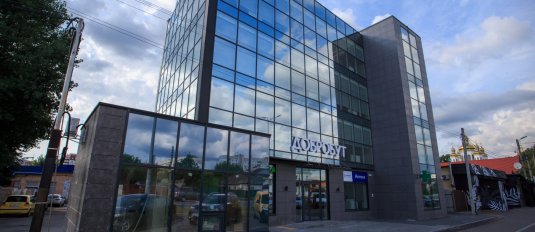
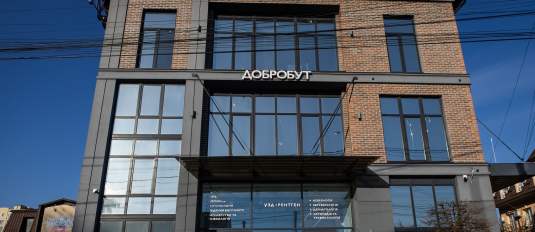
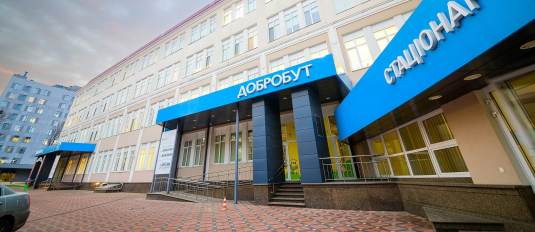
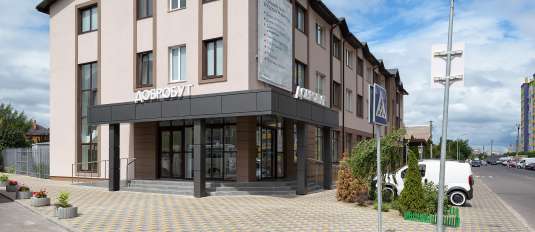




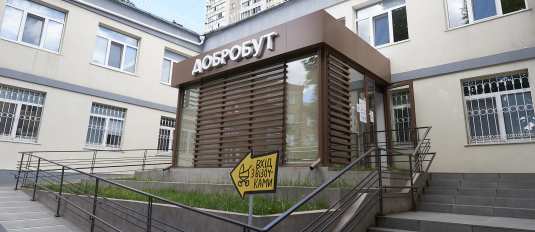
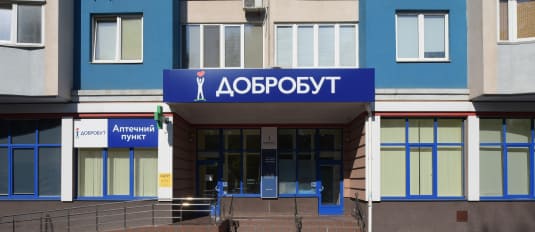

%402x.png)
%402x.png)
